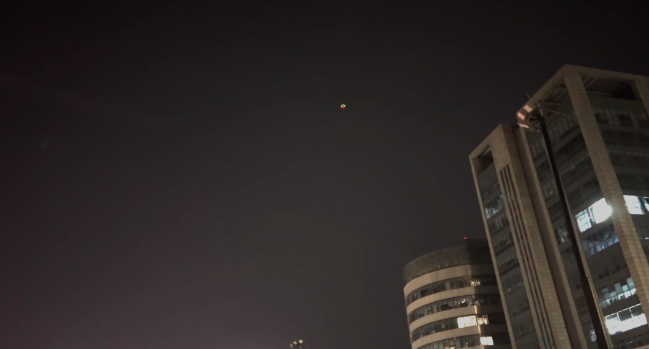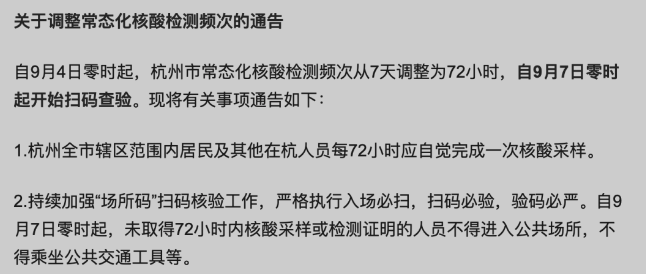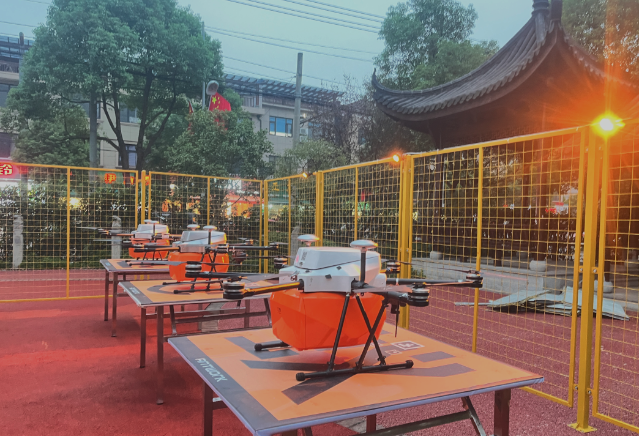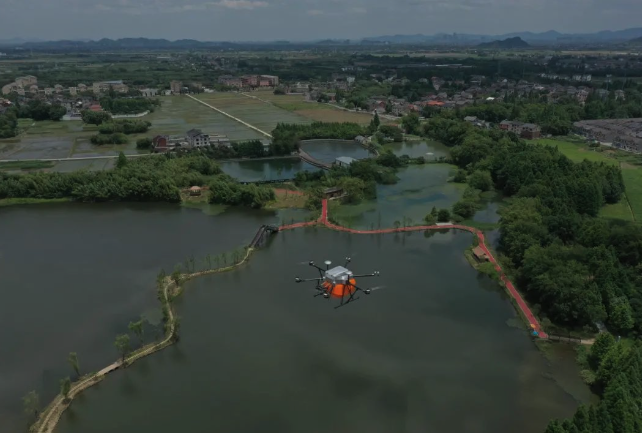"What is flying in the sky?"
"Oh my, it's a nucleic acid delivery."
"Nowadays, drones are used to deliver nucleic acids, which has been around for a long time."

Qian Xiaomin is from Yuhang, Hangzhou. Just as she left the company, she heard this conversation. For her, the fact that drones deliver nucleic acid has become commonplace. Not long ago, she just received a call from her parents, and the nucleic acid testing point near her home has also opened a drone route, which has greatly improved the speed of nucleic acid testing. Behind this is not only the hard work of the nucleic acid collection staff, but also the silent support of the Ant drone, which has overcome one difficulty after another behind the scenes.
On the afternoon of September 4th, Hangzhou issued a notice on adjusting the frequency of routine nucleic acid testing. Starting from 0:00 on September 4th, the frequency of routine nucleic acid testing will be adjusted from 7 days to 72 hours, and testing will begin on September 7th. For a while, many nucleic acid collection points began to queue up in long lines.

Hangzhou's routine nucleic acid testing ranks among the top in the country, one of the reasons being that it can respond quickly when adjusting the frequency of nucleic acid testing, increase the number of nucleic acid testing points, or adjust the running time of nucleic acid testing. While staff are working overtime to conduct nucleic acid testing for the public, Antwork drone's nucleic acid transportation is also facing new challenges.
Due to the original 7-day frequency and limited daily nucleic acid testing samples, Antwork has developed a meticulous operation plan based on the daily nucleic acid testing samples to ensure that each tube of samples can arrive at the testing laboratory on time. However, unexpected situations have led to a sharp increase in transportation demand, and the original schedules cannot meet the demand for nucleic acid transportation. The Antwork operation engineers urgently deployed backup planes to fly to the station and opened up backup routes to meet unexpected needs.

"Since the nucleic acid delivery time was changed to 3 days on September 7th, the frequency of our drones transporting nucleic acids has significantly increased. On average, the nucleic acid route in Yuhang District needs to operate 120-150 flights per day. Based on the fewer 120 flights, we need to fly an average distance from Hangzhou to Beijing every day in this area alone," said the engineer in charge of drone monitoring and operation, "Our drones are capable of operating 24/7 throughout the entire time period, providing excellent support for nighttime nucleic acid transportation needs."
It is reported that there are nearly 10 standing drones at the testing laboratory site. Through the scheduling and capacity supplementation of drones, it is currently possible to perfectly cover the transfer needs of all flight stations.
In sharp contrast to the urban core area, there are four remote small towns in the western part of Yuhang District, Hangzhou City. There are no sample testing institutions in the town, and the distance from the sample testing points in Yuhang District is relatively far. For nucleic acid samples, they can only be stored at room temperature for a maximum of 4 hours, and vehicle transportation every 4 hours not only incurs higher costs but also results in a smaller sample size and lower efficiency, becoming a major pain point.
In order to ensure the normal living and travel needs of residents in the four western towns, Antwork took on this challenging task and was responsible for the transportation of nucleic acid samples from Jingshan, Huanghu, Cormorant Bird, and Baizhang. The same problem is also facing the ants: the sample size transported is small, and more importantly, the distance between the four towns and the nearest Yuhang Third Institute is 30 kilometers, and the route distance exceeds the design distance of the drone. Is there any way to kill two birds with one stone?
The clever operation engineer proposed this plan: the drone takes off from a remote town and stops at Jingshan first. One is to replace the battery and supplement the energy, and the other is to supplement the data when the sample size is not saturated, which can improve the utilization rate of drones.

Drones, like buses, transform resource allocation from traditional "one-on-one" to "many to one". Through this "stop by stop" approach, the problem of the original route being too long is not only perfectly solved, but also flexibly responds to the peak and valley situations of nucleic acid samples in remote areas, improving transportation efficiency.
At present, Antwork Nucleic Acid has opened 9 routes from Yuhang Yiqiao, Wuchang Yunchuang, Wuchang Yongfu, Xianlin, Zhongtai, Huanghu, Jingshan, Luniao, and Baizhang to the testing point. Together with other industry partners, we have completed the full coverage of the nucleic acid sample transportation network in Yuhang District.

In the current fluctuating epidemic situation, changes in nucleic acid testing requirements have brought about even more uncertain sample transportation needs. Compared to traditional ground transportation, in addition to its fast delivery time and strong maneuverability, the good adaptability of drones can precisely adapt to uncertain transportation frequencies and solve transportation pressure through various means.
So far, Antwork has opened up routes for nucleic acid transportation in many places, and the daily average transportation volume has reached 250000 people. Next, Antwork will continue to actively cooperate with departments and medical institutions at all levels, cooperate with multiple cities, and safely and efficiently complete the transportation task of nucleic acid samples, bringing real convenience to residents.
咨询/售后服务热线:
400-765-5670
公众号-1

视频号-2
